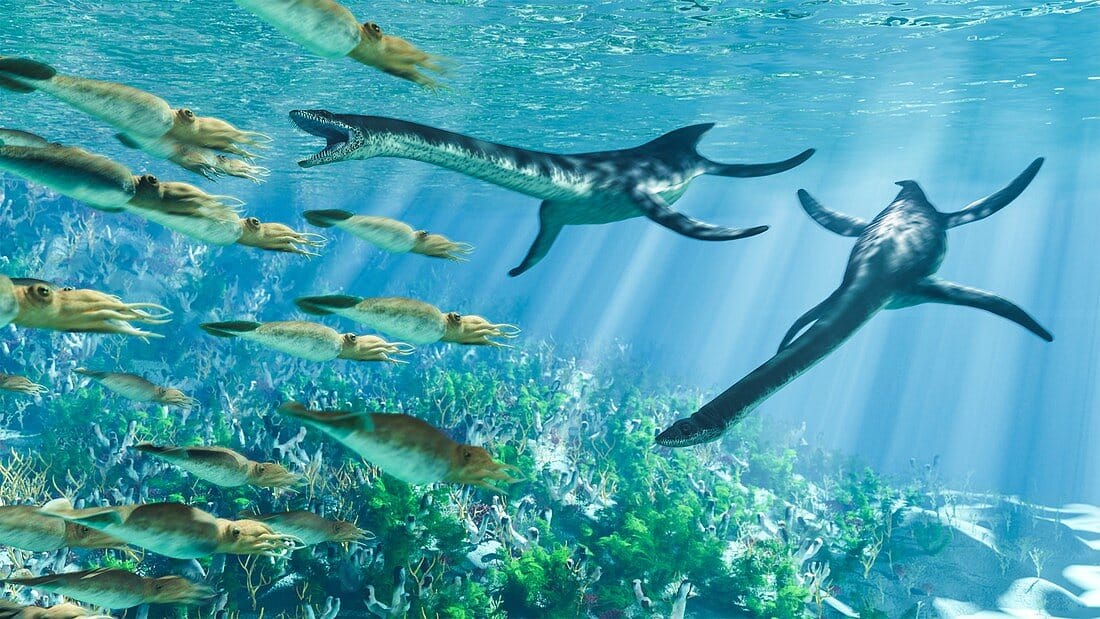
Otodus Megalodon: A Warm-Blooded Giant Shark That Roamed Ancient Oceans
Introduction
Otodus megalodon, a colossal megatooth shark, dominated the world's oceans from 23 to 3.6 million years ago. With a staggering length of at least 15 meters, it ranked among the largest apex marine predators since the Mesozoic era. Recent research conducted by paleontologists delved into the mysteries surrounding the extinction of Otodus megalodon. Through quantitative analysis of its body temperature, the study provided insights into its thermal physiology, revealing elevated temperatures that hinted at a level of internal heat production akin to modern warm-blooded creatures.
Exploring the Extinction
The demise of Otodus megalodon occurred approximately 3.6 million years ago. As part of a group with a geological history spanning nearly 200 million years, sharks have witnessed the emergence and disappearance of numerous species throughout the ages. Surprisingly, many shark groups even survived the mass extinction event at the end of the Cretaceous period. Presently, our oceans are home to over 500 shark species, inhabiting diverse marine habitats ranging from the coastal epipelagic zone to the profound abyssopelagic zone, reaching depths exceeding 1,000 meters. These majestic creatures fulfill crucial roles as meso- and apex predators while also serving as potential food sources for older individuals or larger species.
The Significance of Body Temperature Regulation
The ability to regulate body temperature holds profound evolutionary implications, as it is believed to have played a pivotal role in the evolution of gigantism among predatory sharks. Otodus megalodon, primarily known through its colossal teeth preserved in the Late Neogene fossil record, is now inferred to have been warm-blooded or, more precisely, regionally endothermic, based on compelling evidence.
Empirical Evidence of Warm-Bloodedness
Unlike previous conjecture-based studies, a team of researchers led by Professor Michael Griffiths from William Paterson University provided the first empirical evidence supporting warm-bloodedness in this extinct shark. The scientists employed a groundbreaking geochemical technique that involved clumped isotope thermometry and phosphate oxygen isotope thermometry to test the megalodon endothermy hypothesis. By comparing the body temperature of Otodus megalodon with co-occurring fossils of known metabolisms, they employed these methods, which have proven effective in inferring the thermo-physiologies of fossil vertebrates with previously unknown metabolic origins.
Unveiling Body Temperature through Geochemical Techniques
Clumped isotope thermometry relies on the thermodynamic preference of certain isotopes, such as carbon-13 and oxygen-18, to bond in a mineral lattice according to specific mineralization temperatures. The degree of clumping or bonding reveals the temperature at which the mineral formed. On the other hand, phosphate oxygen isotope thermometry examines the ratio of stable oxygen isotopes (oxygen-18 and oxygen-16) in phosphate minerals, as this ratio depends on the temperature of the body water in which the minerals originated.
Warm-Blooded Confirmation
The findings of the study confirmed that Otodus megalodon exhibited body temperatures significantly higher than those of cold-blooded or ectothermic sharks, suggesting a degree of internal heat production comparable to modern warm-blooded animals. The modern-day shark group with regional endothermy, including species like the mako and great white sharks, was previously reported to have an average body temperature ranging from 22.0 to 26.6 degrees Celsius, which could be up to 10 to 21 degrees Celsius higher than the ambient ocean temperature. In line with this, the study indicates that Otodus megalodon maintained an overall average body temperature of approximately 27 degrees Celsius.
Implications for Climate Change and Apex Predators
The extinction of Otodus megalodon coincided with significant climate and sea-level changes, which had a profound impact on the distribution and availability of prey. This new study sheds light on the vulnerability of large marine apex predators, such as the great white shark, to stressors like climate change. Understanding the thermal physiology and body temperature regulation of prehistoric giants like Otodus megalodon offers valuable insights into the challenges faced by their modern-day counterparts in an ever-changing environment.
Conclusion
Otodus megalodon, the ancient giant of the oceans, emerges as a warm-blooded marvel through the innovative application of geochemical techniques. This groundbreaking research provides empirical evidence supporting the warm-blooded nature of this extinct shark, overturning previous assumptions. The study's findings deepen our understanding of the evolutionary mechanisms behind gigantism in predatory sharks and shed light on the vulnerability of apex predators to environmental changes. By unraveling the mysteries of the past, we gain valuable knowledge to inform the conservation and protection of present-day marine ecosystems.



